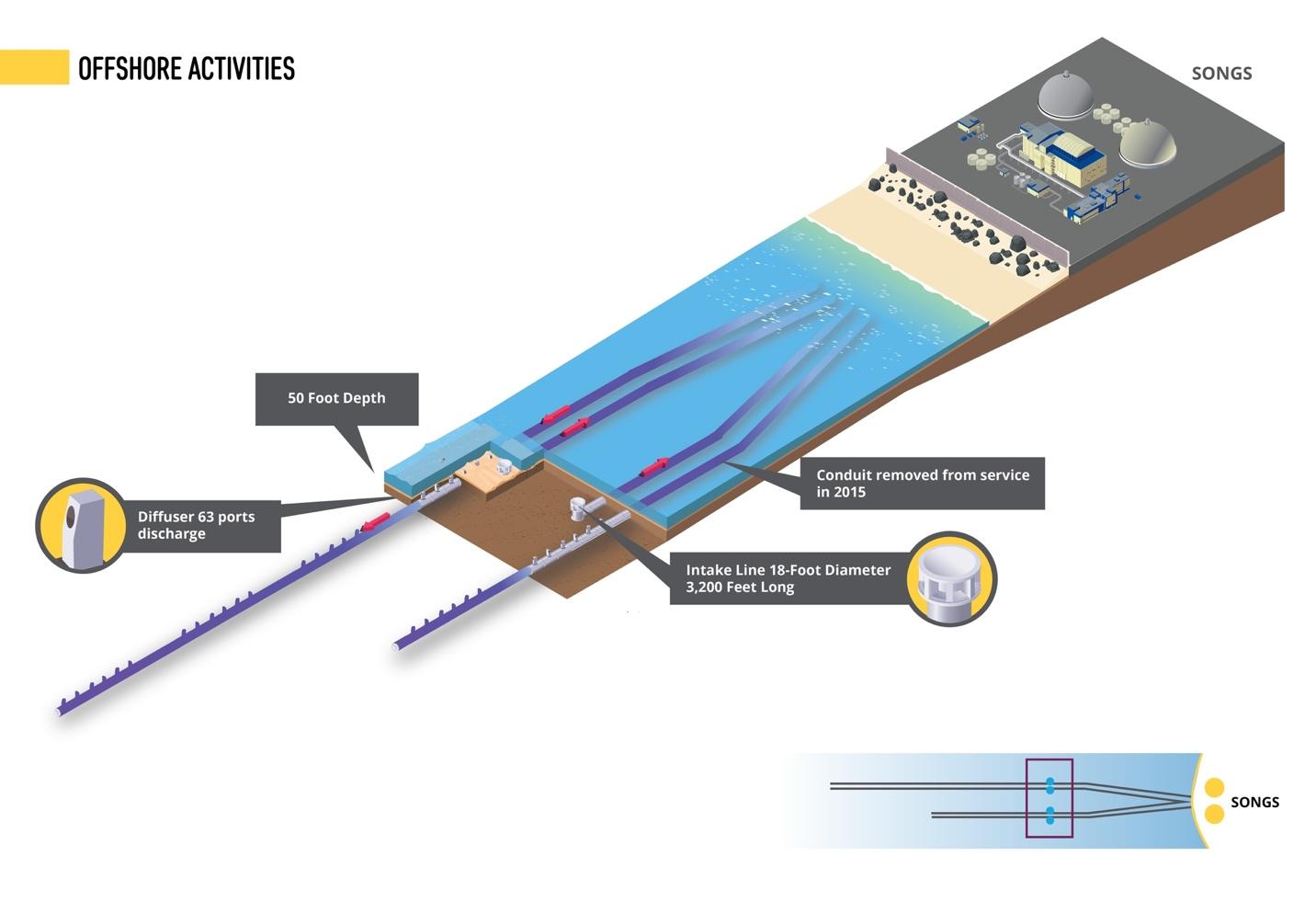
Southern California Edison has announced that yet another liquid batch release containing radiological effluent (fourth one this month!) will start this Thursday, 1.1 miles offshore of the San Onofre Nuclear Generating Station (SONGS) and the popular surf beaches at San Onofre State Park.
The batch will include 18,900 gallons of treated wastewater and radiological effluent diffused through offshore conduits.
This notification was made thanks to the urging of Surfrider Foundation staff at the March 26 2019 California State Lands Commission hearing where Edison committed to providing batch release notifications and enhanced radiological and environmental monitoring. The goal is to keep the local beach-going and surf community informed about what effluent and potential hazards are posed by actions at the local nuclear plant.
Now at least you can know before you go.
Edison explains that the effluent has been treated to a radiological dose level of just 0.000784 mrem, which when considered cumulatively with earlier batch releases this year, is 0.163% of the annual whole body dose limit (6 mrem). While this is well within their legal allowance set by the Nuclear Regulatory Commission (NRC), Surfrider believes that it's important for the community to be able to make informed decisions about their potential exposure.
California State Park beaches, including San Onofre, have reopened during this phase of the COVID-19 pandemic. In addition to considering local water quality, it's important to remember to follow local guidelines regarding COVID-19 and keep your distance from other beachgoers to protect your health and the health of others.
The following is an excerpt from Edison’s public Liquid Batch Release Notification page and FAQ page:
If I’m swimming or surfing at San Onofre, is there any harm to me?
"No and here's why. First, the dose is already small to begin with, diluted in thousands of gallons of water. Once released to the ocean, it mixes with vast quantities of ocean water. This serves to further dilute the discharge and reduce the dose below measurable levels. Second, radiation exposure to humans is based on pathways, the routes by which radioactivity might be transported. The primary pathway for liquid releases would be eating seafood (fish, crustaceans) that might accumulate radioactive material. There is no drinking water pathway for SONGS since there is no potable water near the site."
The non-radiological releases, such as sewage, meet the stringent criteria of our National Discharge Pollutant Elimination System permit, as implemented by the State Water Resources Control Board. SCE's license with the Nuclear Regulatory Commission governs radiological releases. In both cases, the wastewater is cleaned-up and highly diluted before release to the ocean via discharge ports that are more than a mile offshore from San Onofre.
Liquid Batch Releases
Liquid batch releases comprise a set volume of water from a specific tank, as opposed to continuous industrial wastewater releases. The water is placed in the tank; circulated through ion exchangers and filters to remove impurities; and then sampled prior to release to ensure it meets regulatory requirements.
48-hour Notice
SCE is providing the public with an approximate 48-hour notice prior to commencing an operational batch release. This notification is posted on this page in the box at right and characterizes the volume, duration, content, and the start date for each release.
SCE has been safely cleaning and discharging these liquids for more than 50 years with no measurable impact on the environment. When San Onofre was operating, these were done frequently, sometimes daily. With the shutdown of the plant, they have dropped dramatically.
What You Should Know: Consistent with our core decommissioning principles, and as part of the approval of SCE’s lease for the off-shore facilities with the California State Lands Commission, we committed to notifying the public 48 hours in advance of future releases. Importantly, this notice is for general awareness only. These releases are similar to those performed in the past and continue to meet all regulatory requirements.
These liquid releases will continue throughout the dismantlement of the plant and will vary in size over the years, depending on the decommissioning activity. On average, the initial set of releases will be approximately 20,000-25,000 gallons in volume and last approximately 4-6 hours. Future releases may be higher in volume but will still meet regulatory limits.
The releases are conducted through the Unit 2 conduit, which extends more than 8,000 feet into the ocean. The actual discharge occurs in the diffuser section, which begins at approximately 6,000 feet (approximately 1.1 miles) from shore.

SCE files an annual report with the NRC entitled, “The Radioactive Effluent Release Report,” which covers the operation of the facility during the previous calendar year. The report includes a summary of the quantities of radioactive liquid and gaseous effluents released from the facility, as well as a summary of the quantities of solid radioactive waste shipped from the facility directly to a disposal site.
To learn more about Surfrider's effort to protect the ocean, waves and beaches near San Onofre and get the waste off the beach, click here.
